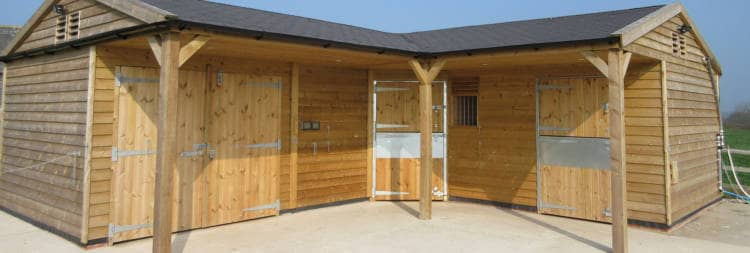Monday 22nd October, 2018

October heralds the start of Autumn, and with the night’s drawing in you will likely be looking to switch up your stable routine. Although the frost doesn’t usually set in for another couple of months, you will certainly see a considerable dip in the temperature. Fortunately, our four-legged friends have the luxuries of snug stables and toasty turnout rugs to help them battle the elements. If you are a new horse owner or have never stabled your horse before, then check out our tips to making sure your stable will weather the seasons.
It goes without saying that stable security should be paramount on all livery yards. Check your horse’s stable door panels, hinges and bolts for signs of weakness that could compromise his safety. Look out for rust, stiffness or brittleness in the metal and loose fixtures. The entrance gates should also be kept closed at all times, to prevent loose horses leaving the yard. If padlocks are used on gates/stables make sure a master key is kept securely and quickly available in the event of an emergency.
It is vital that you carefully assess the structure of your stables ahead of the harsh winter weather. Many minor flaws can be easily fixed but if left, can pose a problem further down the line. External facing elements such as brick or wooden panels can become damaged through frost or storms so make sure that you check for any cracks or holes in the walls. If your stable design includes windows, check for gaps around the frames or broken glass that could cause draughts to come in.
Horses are naturally social creatures that move in herds, and stabling alone can be difficult for them. Why not try and dovetail your horse’s turn out and stabling routine with a fellow stable mate. This way he won’t suffer from loneliness while on the yard.
Not all horses require stabling through the winter. Heavier breeds such as Welsh Cobs and Irish Draughts will happily be turned out all year round. However they too need shelter from the elements. This is where handmade field shelters come in. Make sure your shelter is sturdy and safe, with no broken or fallen panels, or compromised roofs. Loose corrugated sheeting can cause considerable injury to panicking ponies.
Shelters for ponies must be 3.0 x 3.6m in size, whereas larger horses need at least 4.5m x 3.6m. Shelters built for multiple horses need to be at least 7.2m x 3.6m with two entrances/exits. If moving to a new yard or welcoming a field mate, make sure the shelter will accommodate all the horses on the yard. Mobile field shelters provide a perfect solution while also allowing the ground to rest during the winter.
For more information simply visit: www.valestables.co.uk